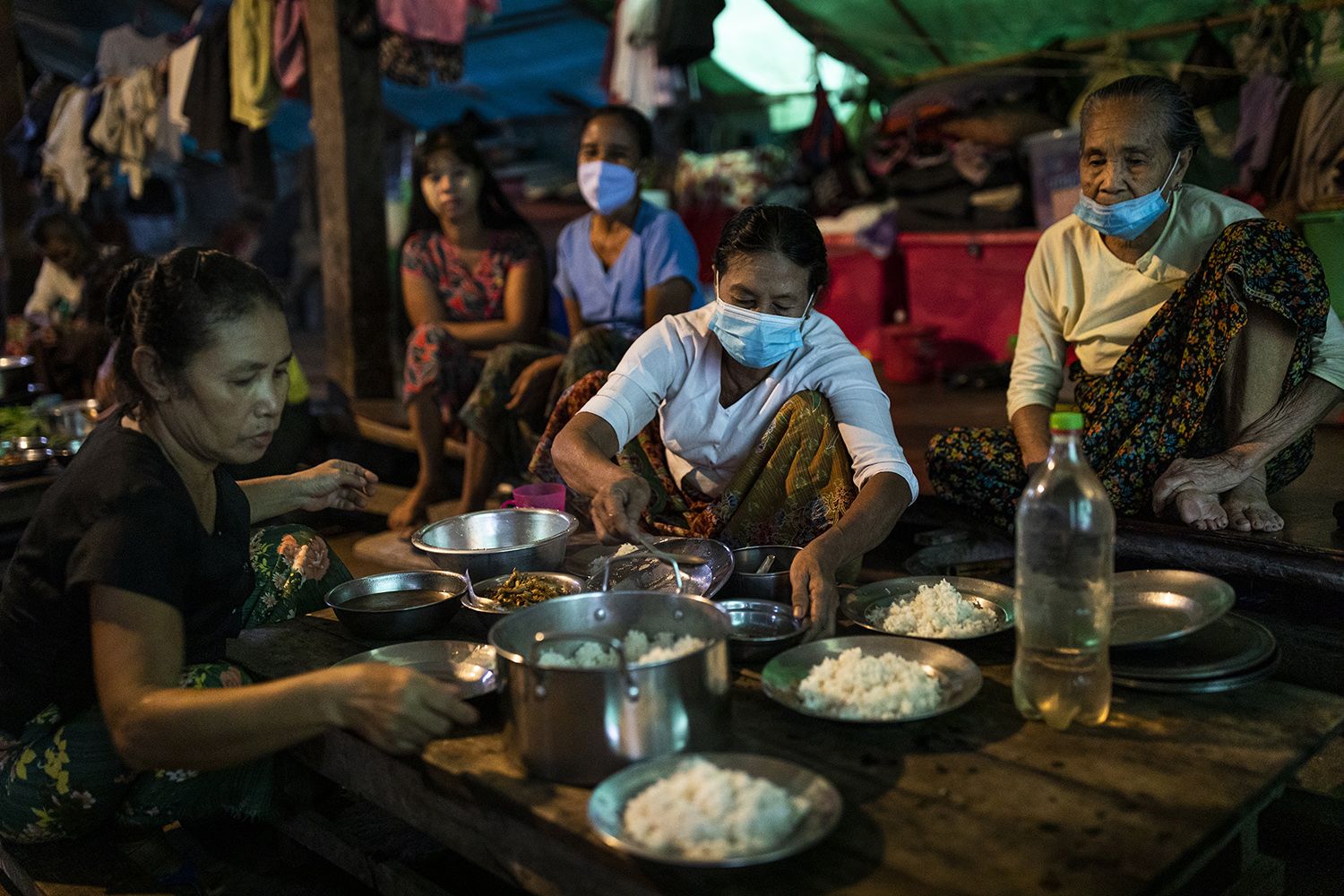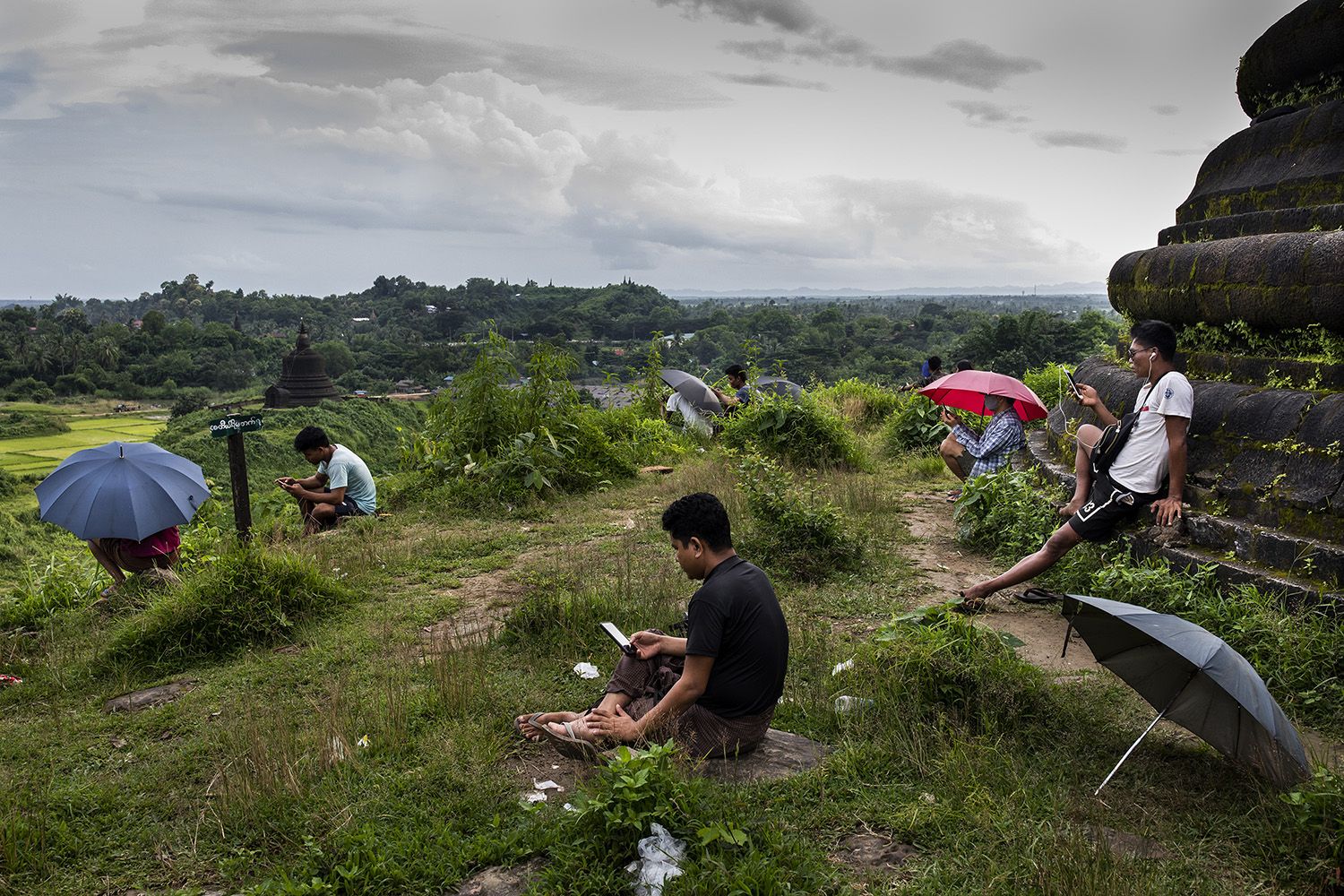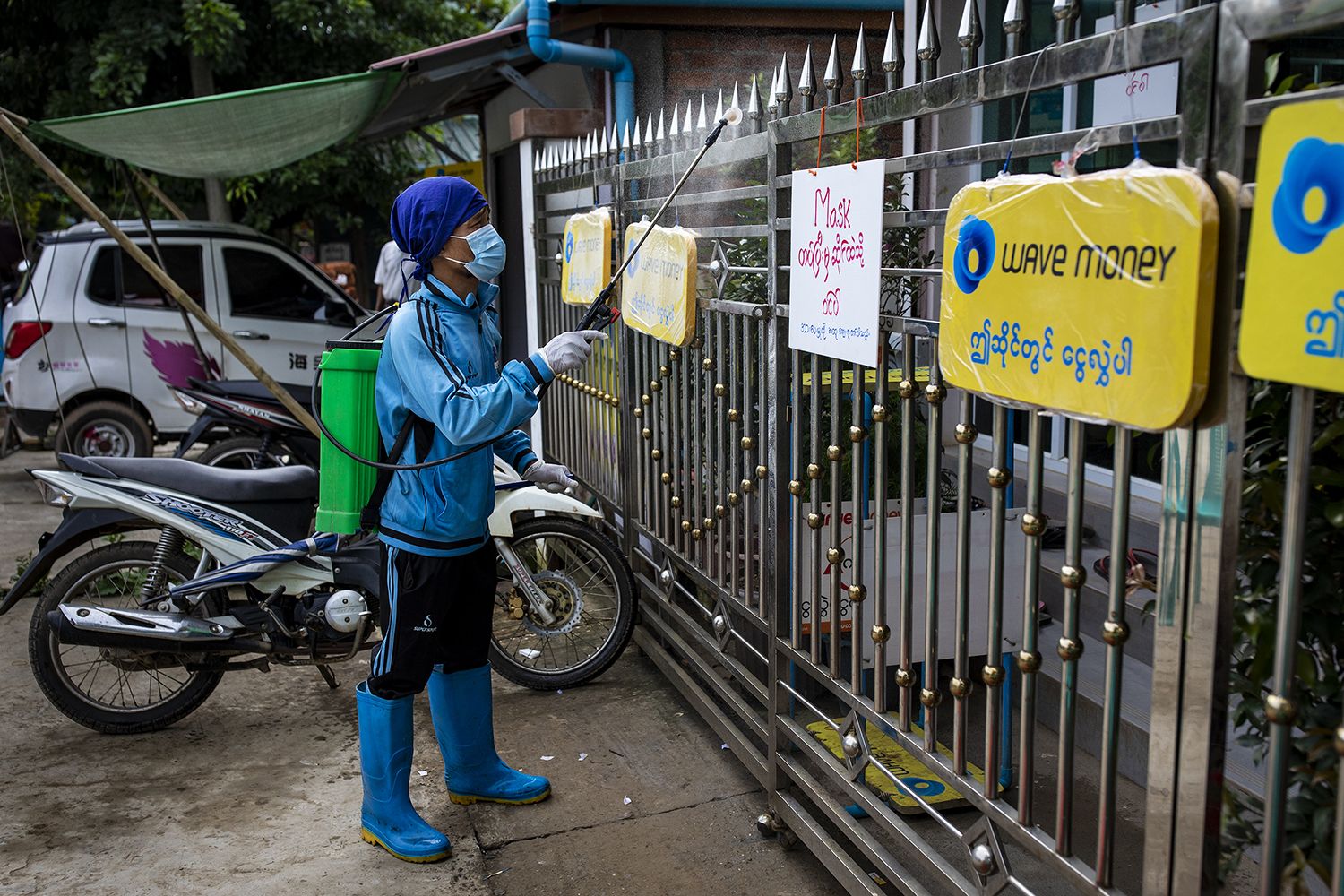YANGON, Myanmar—On Aug. 16, Myanmar’s health ministry announced the country’s first locally transmitted COVID-19 case in a month in Sittwe, the capital of Rakhine state. By Sept. 1, the number of confirmed cases across the state had risen to 393, while as of Sept. 3, the whole country has recorded 1,111 cases since the coronavirus pandemic began.
Myanmar has reported only six deaths from COVID-19 so far, but its limited health infrastructure raises concerns about its potential ability to control a larger outbreak. Three years ago, a brutal military campaign pushed more than 700,000 members of the Rohingya Muslim minority to flee across the border to Bangladesh. Since late 2018, the state has faced another crisis: the escalating conflict between the rebel Arakan Army, which seeks autonomy for Rakhine, and Myanmar’s armed forces, known as the Tatmadaw.
By July, the violence—which has spread to a neighboring state, Chin—had displaced nearly 200,000 people, according to the Rakhine Ethnics Congress, an organization monitoring the conflict. The pandemic has not slowed the fighting: The Rakhine state government reported that nearly 82,000 people were displaced between March 16 and July 6.
Coronavirus cases are now rising alongside civilian casualties and displacement, and Rakhine state’s health infrastructure could easily become overwhelmed. The state government has limited access for humanitarian organizations to some conflict-affected populations since early 2019. And for more than a year, the national government has blocked high-speed internet in eight townships in Rakhine and Chin states—restricting access to information for more than 1 million people.
In response to the Rakhine outbreak, the Myanmar government has imposed strict prevention and control measures and sent doctors to Sittwe. But in the context of the ongoing conflict, the response may fall short of what is needed to avert a public health disaster.
* * *
Rakhine state has experienced conflict and instability for much of the last decade. In addition to the violence against the Rohingya in 2017, for which Myanmar now faces genocide charges at the International Court of Justice at the Hague, sectarian violence in 2012 resulted in the confinement of around 130,000 Rohingya to internally displaced person (IDP) camps in Sittwe, where they remain without freedom of movement.
The Arakan Army, established in 2009, seeks self-determination for the Arakanese, a predominantly Buddhist population in Rakhine state. Arakanese grievances toward central governance date to the late 18th century, when the Burmese empire invaded the Arakan kingdom based in Mrauk U, which for three centuries was a prosperous trading hub. Today, Rakhine state is one of Myanmar’s poorest.
The armed conflict between the Arakan Army and the Tatmadaw has taken a high civilian toll. On Aug. 31, Radio Free Asia reported that 620 people had been injured and 282 killed since December 2018, when the fighting escalated. An Amnesty International briefing, based on data collected in May and June, documented ongoing indiscriminate airstrikes and shelling of civilian areas, the destruction of villages, and the arbitrary detention and torture of civilians.
Myanmar’s government has made it difficult for non-state actors to monitor the conflict and alleged human rights violations. In addition to the internet restrictions, the government has blocked access to several websites, including two ethnic Rakhine media outlets reporting on the conflict, for allegedly distributing “fake news.” In March, the government also designated the Arakan Army as a terrorist organization, after which two local media editors were charged with violating a counter-terrorism law for publishing interviews with the group.
The increase in violence in Rakhine comes as most of the world is focused on fighting COVID-19. On March 23, U.N. Secretary-General António Guterres issued an appeal for a global cease-fire, citing the vulnerability of conflict-affected and displaced populations to both the effects of violence and the virus. Civil society organizations, foreign ambassadors, and ethnic parties called for the Tatmadaw to heed Guterres’s appeal, while several ethnic armed organizations, including the Arakan Army and its allies, extended cease-fire offers.
The Tatmadaw did not declare a nationwide cease-fire until May 9, which was recently extended to the end of September. But it excludes areas where state-designated terrorist organizations including the Arakan Army operate—effectively leaving out Rakhine and southern Chin. The Arakan Army and its allies extended cease-fire offers to the Tatmadaw on June 1 and Sept. 1, with the stated aim of initiating political dialogue toward a lasting peace agreement and combating the coronavirus outbreak. The Tatmadaw rejected the June bid and has not yet issued a response to the September request.
The ongoing conflict presents severe obstacles to the COVID-19 response in Rakhine. While domestic air travel was suspended in April, all test samples from Rakhine state were sent to Yangon via car. On April 20, a marked World Health Organization (WHO) vehicle transporting samples came under fire, killing the driver and injuring another WHO staff member. The Arakan Army and the Tatmadaw blamed each other.
Now most test samples are sent to Yangon on commercial flights—but the flights do not run daily, creating obstacles to timely testing, a government health care professional in Rakhine told Foreign Policy on the condition of anonymity. He said that despite their best efforts, health care workers are struggling to manage contact tracing in the state.
The government restored 2G internet in August, but a shutdown of 3G and 4G services in eight townships still leaves conflict-affected populations with scant access to real-time information about the pandemic. In a statement published in April, the government said that in areas with suspended internet data, it was providing information via SMS and audio announcements, “with a view to ensuring that no one is left uncared for.”
Meanwhile, the government has sought to silence dissent over the restrictions. On Sept. 4, a court will deliver a verdict for an activist charged in relation to a banner hung in June reading, “Is the internet being shut down to hide war crimes and killing people?” Nine other student activists were briefly jailed following demonstrations in February.
Kyaw Lynn, one of the jailed students, said a full restoration of services is urgently needed to protect the health and safety of civilians in Rakhine. “Especially in conflict-affected areas, the lack of transparency created by the internet shutdown causes insecurity,” he said.
Citing security, the Rakhine state government has restricted most non-governmental organizations and U.N. agencies from traveling to rural areas and six conflict-affected townships since early 2019. The Tatmadaw has also at times blocked aid shipments to displaced populations. Local organizations and volunteer groups have stepped up to fill the void, and monastery compounds and other informal sites have taken in large numbers of IDPs.
Khine Murn Chun, the president of the Mrauk U Youth Association, told Foreign Policy that locals are running several IDP camps in Mrauk U, which hosts more than 18,000 IDPs. Yet community donations to provide this support are diminishing, and IDPs have few options to support their basic needs, he said. In addition to government restrictions on aid, the pandemic has further disrupted the flow of aid to the region, and local media have recently reported food shortages in some IDP camps.
Conflict-displaced populations are particularly at risk of contracting the coronavirus. Overcrowded conditions in IDP camps make social distancing difficult, while soap and clean water are in some cases in short supply. While testing among IDPs remains limited, aid workers from international humanitarian organizations who had recently traveled to IDP camps in three townships in Rakhine state have tested positive for COVID-19.
* * *
On Aug. 28, the Rakhine chief minister said the state government had so far spent 1 billion kyats, or around $748,000, on fighting the spread of the coronavirus, while Myanmar’s civilian leader Aung San Suu Kyi guaranteed sufficient food and financial assistance across the state.
But Min Bar Chay, the director of the Arakan Civil Society Organization Network in Sittwe, said he hoped to see more from the government. Civil society organizations are taking an active role in the response, providing quarantine facilities, collecting food and blankets for those under government-run quarantine, and raising awareness about virus prevention, he said.
“We are taking responsibility and action for the COVID-19 response due to the government’s insufficient accountability and responsibility,” Min Bar Chay said.
In addition to the ongoing restrictions on humanitarian access and the internet, Myanmar excluded the Arakan Army from national-level peace talks held in August, extinguishing optimism for constructive dialogue in the near future.
But it is not too late to work toward sustainable peace in Rakhine. The government should engage in public messaging that shows an unequivocal commitment to ending the conflict, allow journalists to report freely on the situation in Rakhine without fear of arrest, and grant independent rights monitors unrestricted access. Both sides of the conflict should also condemn violence against civilians and commit to protecting civilian lives. For the Myanmar government, this includes holding the Tatmadaw accountable for abuses.
The government has emphasized its efforts to ensure no one is left behind in its COVID-19 response in Rakhine state, highlighting the importance of ending the armed conflict to address humanitarian needs. To slow the spread of the coronavirus, the warring parties should agree to a cease-fire, and the government should restore full internet services and allow humanitarian access. There is no time to lose in halting the violence in Rakhine state.
While lasting peace and reconciliation may be a distant hope, this should not stand in the way of the pandemic response.
COVID-19 Update: The connection between local and global issues–the Pulitzer Center's long standing mantra–has, sadly, never been more evident. We are uniquely positioned to serve the journalists, news media organizations, schools and universities we partner with by continuing to advance our core mission: enabling great journalism and education about underreported and systemic issues that resonate now–and continue to have relevance in times ahead. We believe that this is a moment for decisive action. Learn more about the steps we are taking.


